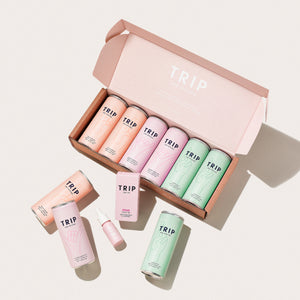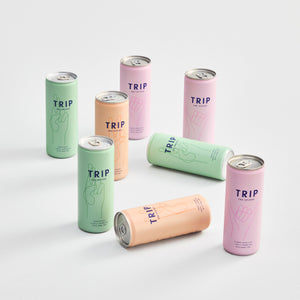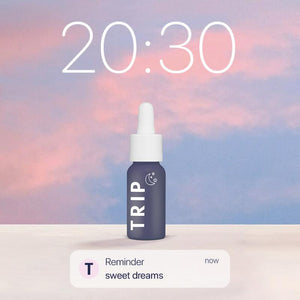CBD or cannabidiol is a natural compound extracted from the hemp plant. If this sounds familiar, that’s because it shares its origin with tetrahydrocannabinol (THC), the psychoactive element in cannabis. However, because hemp contains very little THC, and has no intoxicating or psychotropic effects, CBD oil extracted from hemp is therefore legal. It is different from hemp oil, however, which has its own distinct extraction process.
CBD usually begins as a crystalline powder but it can also be extracted as as a liquid emulsion. The CBD is then combined with a ‘carrier’ oil — this tends to most commonly be MCT (medium chain triglyceride) or coconut. However, CBD products are not limited to oil, and they can also come in the form of edibles, topicals and drinks.
There has been an increasing amount of hype around this compound for its various potential therapeutic and physical benefits, and a steady rise of products meeting this growing demand — with CBD oil being the most popular. As a result, many people are wondering how the stuff is even made to begin with.
In this article, we’ll walk through how to make CBD oil from hemp, whether that’s in the large-scale manufacturing of CBD or even from your own home.
What is CBD?
CBD and THC are two distinct compounds that interact with your body in different ways. Nonetheless, they have similar origins, which explains common confusion around their legality and effects.
CBD and THC have the same chemical formula: 21 carbon atoms, 30 hydrogen and 2 oxygen atoms — but they are arranged differently, resulting in two separate compounds with individual chemical attributes. They are similar in that they both are related to the body's ECS (endocannabinoid system) that controls the release of neurotransmitters in the central nervous system, affecting things like stress, mood, and sleep.
How to extract CBD from hemp
In order to make CBD oil, hemp plants are first grown using the cannabis sativa L. growing process — a cloning method where farmers use hemp plants rich in cannabinol. For commercial purposes, these hemp plants will have very low levels of THC.
Since CBD is one of many hemp compounds, removing it from the plant can be a tricky process. Most manufacturers use a CO2 extraction method, dividing the CBD molecule from neighbouring compounds in cannabis, which also ensures the solution is pure. In many cases, CBD will be extracted to yield a concentrated amount that is suitable for oils, topicals and e-liquids.
CO2 extraction
Although CO2 is a gas, it can be turned into a solvent liquid for the purposes of distillation — not just for CBD, but for other treatments such as decaffeinating coffee beans and removing nicotine from tobacco leaves. This is the most popular method of CBD extraction because it makes for a pure and exact process, without the risk of contaminants incurred by other methods like solvent extraction.
CO2 treatments are generally divided into two categories: supercritical and sub-critical. Both involve applying pressurised carbon dioxide throughout the hemp in order to strip away its phytochemicals (plant chemicals).
Subcritical CO2 extraction
Subcritical processes are conducted at low pressure and temperature, and retain a host of essential compounds and chemicals that the plant contains. The subcritical approach can yield greater molecules, but these natural elements are often heavily damaged due to its intensity.
Supercritical CO2 extraction
The supercritical method uses a closed-loop extractor, and takes a shorter amount of time than the subcritical technique, producing a larger yield. The hemp plant is placed in a chamber that is then filled with carbon dioxide. Pressure is applied to turn the CO2 into liquid form, so it can absorb the hemp’s oil and flavour.
The result of this is a fluid containing both CBD and CO2, which then undergoes a change in pressure and temperature. This allows certain molecules to bind to the CO2, enabling it to separate from the new CBD oil that is moved into an extraction jar. Afterwards, the CO2 liquid is rerouted back into another tank where it can be once more changed into gas-form and reused — making it a highly sustainable method.
In order to effectively isolate the compounds, however, the extracted oil needs to be distilled further. This begins with winterisation, which is then followed by short path CBD distillation.
Winterisation
Winterisation removes unwanted compounds such as lipids, fats and waxes. Nonetheless, it is only required if the CBD has been extracted using a supercritical technique, since this process results in undesirable elements leftover in the liquid residue. Winterisation involves combining this residue with pure ethanol (100% alcohol) and freezing it overnight. This is a crucial part of the process, as maintaining a consistent sub-zero temperature means that the undesirables coagulate. If this step is not performed properly, the overall purity of the cannabinoid will be diminished.
The next morning, it should have a cloudy appearance that indicates it is ready to be filtered through a filter paper or separatory funnel, normally with the help of a vacuum. It is vital that sub-zero temperatures are also maintained during filtration, otherwise the compounds cannot separate. After repeating filtration a few times, heat is then used to evaporate any alcohol from the mixture.
Short path CBD distillation
This procedure further purifies the compound in a similar vein to winterisation, except the increase in heat happens at low pressure. A vacuum is also used to draw the vapours up through ‘fractionated’ tubing, and these are then separated through further condensing tubes which take different paths. The liquid is heated in order that each compound can be separated, but not too much as this could degrade the final product.
Solvent CBD extraction
Stepping away from CO2, the most straightforward and cost-effective method for extracting CBD is solvent extraction, as the common substances used are readily available. The method, which is relatively swift, involves combining or soaking the plant in solvent (normally ethanol or butane) that strips the cannabinoids. They are then evaporated, yielding a CBD concentrate containing vital hemp compounds.
In removing the cannabinoids and other chemicals from the plant, using solvents also produces chlorophyll which tastes rather unpleasant and can cause undesired side-effects such as stomach cramps and diarrhoea. However, it does result in a full extraction, since the solvent liquids are able to target all the existing plant trichomes. It can also be highly efficient due to the speed with which you can produce a lot of oil. At the same time, the materials you’ll need are highly flammable and therefore dangerous.
Olive oil extraction
While using olive oil to extract CBD is not the most commercial technique, it has allowed keen individuals a way to make their own CBD oil at home. In finely grinding the hemp plant, or precision-heating it to a specific temperature (around 95 — 120 °C) the cannabinoids’ compound makeup is altered, making them stronger or easier to distil. The hemp is then heated a second time in the olive oil, so that the compounds can be removed via a process of infusion.
Though it’s a safe and inexpensive way to start making it from the comfort of your own home, using olive oil not only takes longer, it produces a smaller yield and weaker CBD concentrate that degrades faster.
Dry ice extraction
Another possible method that can be done at home is with dry ice — which has no denaturing solvents — making for a less contaminated yield. In this process, the loosely-chopped hemp extract is flash-freezed using dry ice. After that, the frosted trichomes (plant hairs) are filtered through a mesh bag, giving you a residue that will form the basis of CBD oil.
The main drawback of this approach is that its quality is difficult to measure depending on just how frozen the hemp plant is, and how vigorously it is sieved. However, dry ice is nonetheless a cleaner alternative to solvents.
Testing
After the main extraction is complete, the product must be thoroughly tested to determine the quality of the residue yielded — something that should not be taken for granted.
Strict standards are maintained during TRIP’s manufacture of CBD oil, along with other related products, in order to ensure we achieved the highest quality and purist CBD products for our customers. The entirety of our output is lab-tested by a third party to confirm the amount of CBD present in our oils and drinks.
Have any other questions? Get in touch here.


















